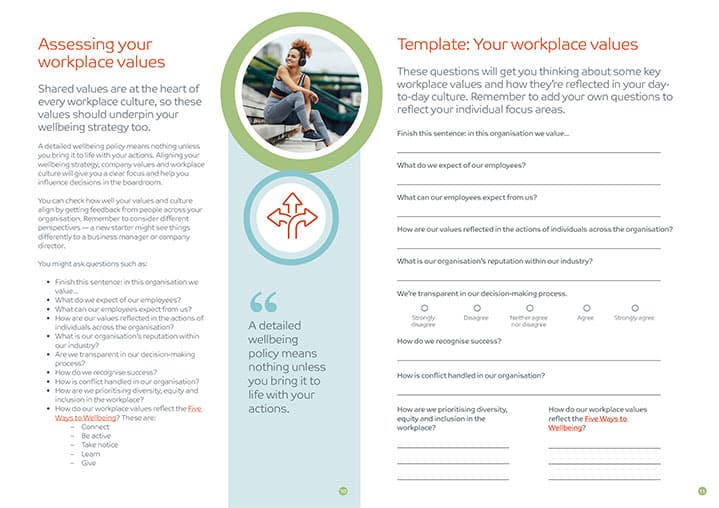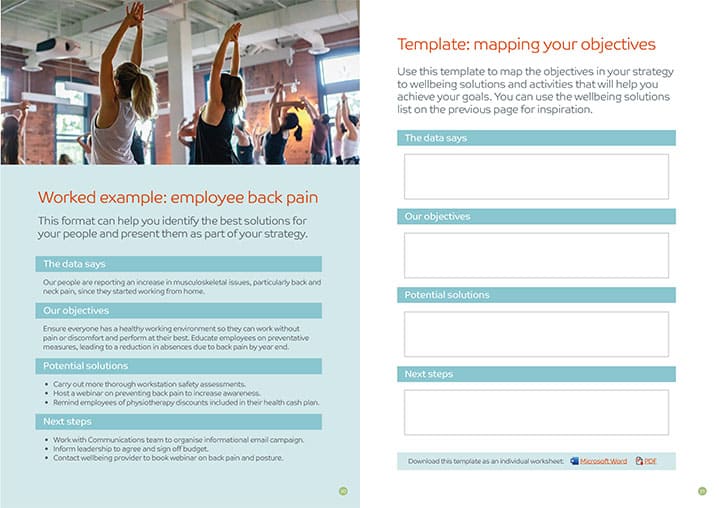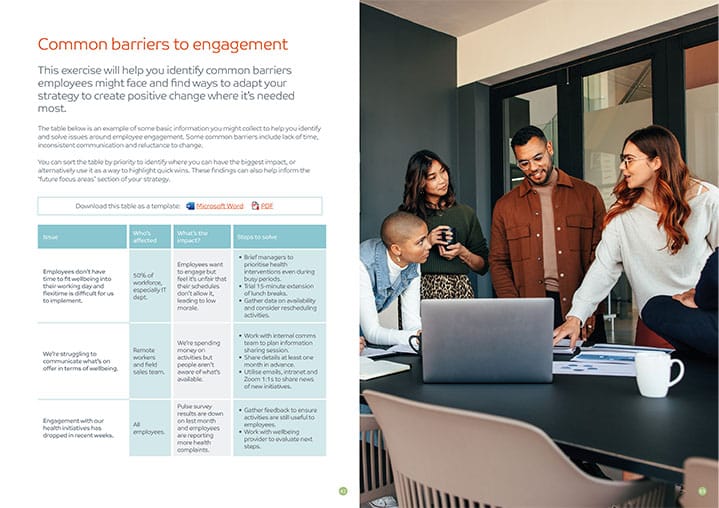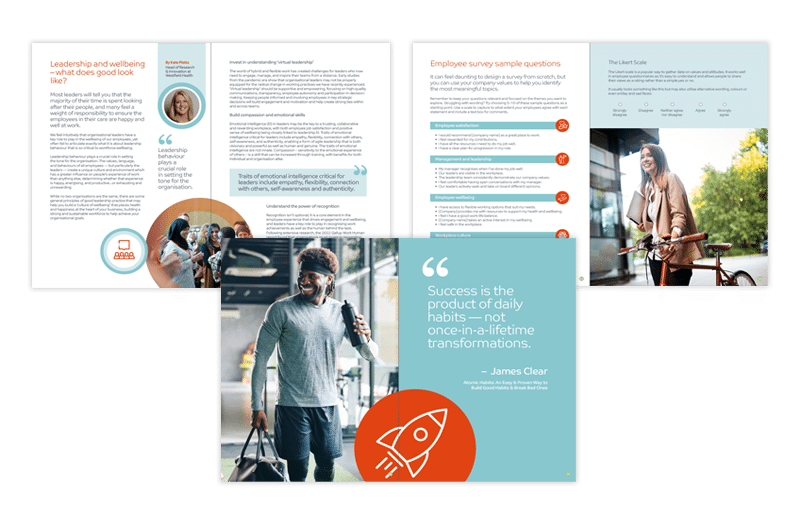Deciding to invest in workplace wellbeing is a great first step, but to make a lasting impact on employee health we must use insights to adapt our strategy, reshape workplace culture and empower our people to make positive lifestyle changes.
Numerous studies have shown that employee wellbeing is linked to greater productivity, so it’s essential that companies have a strategy in place. But to ensure your workplace wellbeing programme delivers these benefits it must be tailored to your organisational needs and be backed up by senior management support.
This interactive e-book will take you through everything you need to know to create a wellbeing strategy that’ll help your people build positive habits both in and outside the workplace.
Chapter breakdown
Explore three chapters of helpful resources you can use to create and measure a wellbeing programme in your business. From embedding company culture to engaging leaders and business partners, our interactive e-book will take you through everything you need to know about creating an effective wellbeing strategy.
Chapter 1: Wellbeing and workplace culture
Every successful wellbeing strategy is backed up by a supportive culture. This chapter explores how to shape your organisational culture and wellbeing strategy in tandem. We cover the importance of values and strong leadership, plus how to utilise simple workplace habits to shape the employee experience.

Chapter 2: Creating your wellbeing strategy
A wellbeing strategy gives your people the support they need to perform at their best. By this chapter you’ll have identified key aspects of your workplace culture and some common habits that impact wellbeing. The next step is to gather insights from your people, set your objectives and build a strategy that adapts to your business needs.

Chapter 3: Behaviour change in action
With your strategy taking shape, you’ll look at how you can get your people engaged with their health and help them foster positive habits. In this section we explore behaviour change theory and tackle some common barriers to help you increase return on investment and make your wellbeing activities a success.

